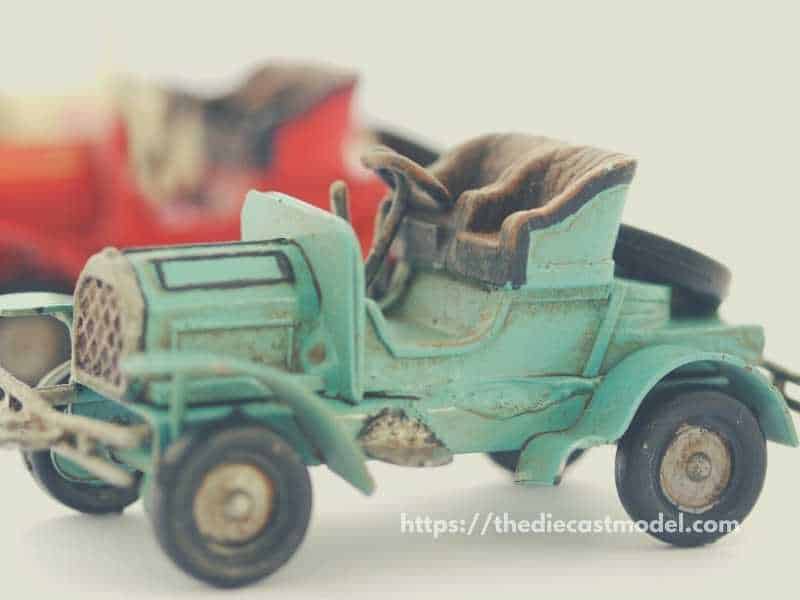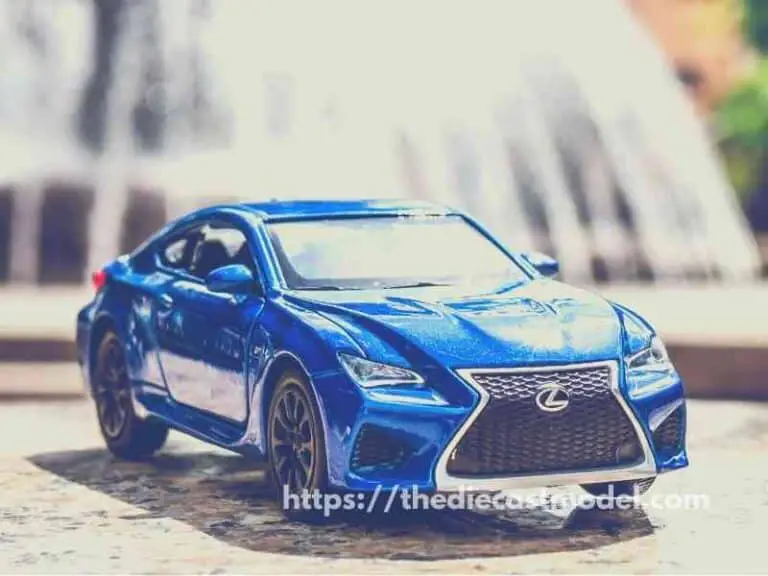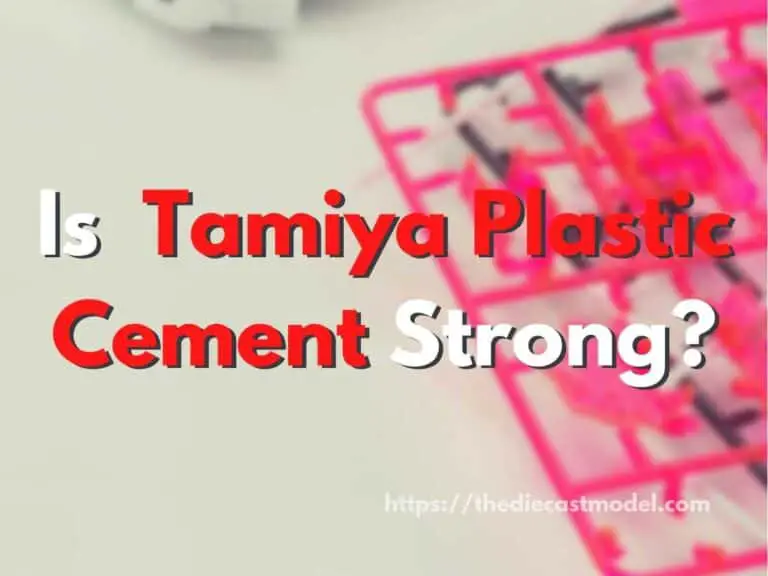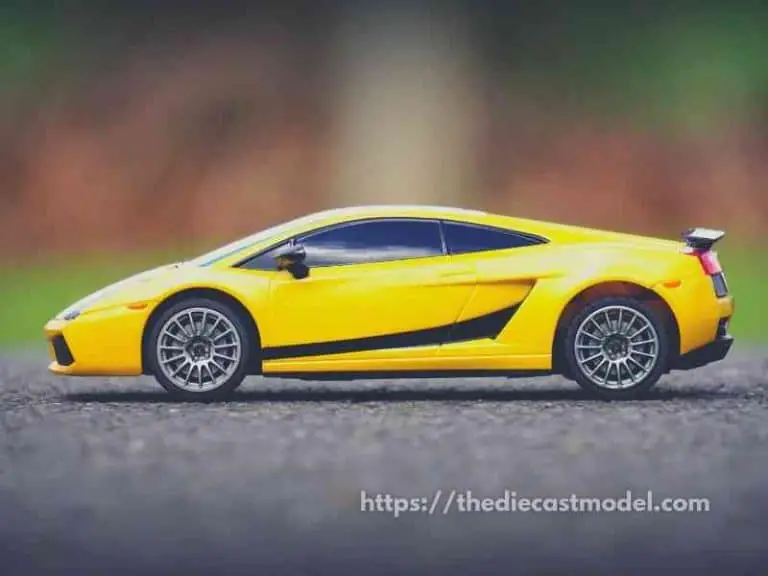Lledo model cars: Are They Worth It? | A Glimpse of Lledo’s History
Lledo is a brand you’ll usually hear when buying diecast toys in the 80s and 90s. They’ve made a series of models which you may have lying around your place. But are these models worth it? Are these worth collecting? If yes, which among these are worth collecting? Plus, how much would these models cost?
Lledo cars, especially the Lledo Chevrolet Panel Van, are worth collecting. Currently, there are only 4 of these models left and have a book value of $450.00. However, because of their strategy to make many variations on just a few basic models, their models became unpopular with collectors. Thus, the majority of their models are not worth collecting.
In this blog post, we are going to talk about Lledo’s history. We will start with their first appearance, successful model series, and success in finding a market gap. However, you will also see that their strategy, which led to a lot of variations, made collecting their models unpopular to collectors.

Are Lledo model cars worth anything?
Lledo first appeared in 1982. The year marked the end of an era for Lesney Products (Matchbox Toys Ltd.), which went bankrupt on June 11, 1982.
Jack Odell (the former president of Matchbox) and Bert Russel founded a new diecast model company called “Lledo” ( Odell spelled backward).
On September 24, 1982, Universal Toys, owned by David Yeh, came up as the buyer and relocated the factory to Hong Kong, but most of the machinery went to Lledo.
After a few years, Lledo removed the name “Lesney Products” from all of the molds.
Odell believed that producing British models for British collectors could still be profitable in England.
In the summer of 1982, Odell and Bert purchased a large portion of the Lesney tooling and machinery from the Matchbox factory in Enfield, Essex.
They began an eight-month tooling-up program for six models that became known as the ‘Days Gone series.
Days Gone
Early in 1983, the first Lledo models entered the market.
A horse-drawn tram, a horse-drawn milk float, a horse-drawn delivery van, a stagecoach-style omnibus, and a horse-drawn fire engine were among them.
The Ford Model T Van, which was introduced later in the year, was one of the more popular models.
Because these were primarily commercial vans, Lledo’s initial business model maximized flexibility and return on investment by producing only a few basic designs.
After that, they expanded their series into a massive range by using different liveries and logos.
Promotional Market
The goal of Lledo’s promotional market was to provide variations to be offered for different businesses.
Lledo became an expert in producing limited-run promotional diecast vehicles.
Suppose a company wanted a batch of toy vehicles produced in their company’s colors with their logo. Lledo began serving that market.
In that case, Lledo could offer various basic vehicle types and then finish them to the customer’s specifications.
The hundreds of Lledo variations that appeared during the first six years of production were based on only thirty basic castings.
The Model T, in particular, became the inspiration for a series of limited-edition models used as gifts and promotions.
Lledo may have appeared to be a niche “promotional” diecast toy company at this point.
Still, they kept spreading the range year after year until it contained 75 models, similar to Odell’s previous “Matchbox 1-75” range.
Unlike the original Matchbox Models of the Yesteryear line, only a few basic castings were available, typically produced in limited edition promotion runs of 500 or 1000 models.
The basic Model T delivery van, for example, was available in over 170 different liveries.
Meanwhile, horse-drawn vehicles became increasingly rare, with the last one appearing in 1984.
This content was originally posted on thediecastmodel.com. If it appears on other websites, it is a violation of the copyright owned by thediecastmodel.com.
The London Double Decker bus was a popular promotional vehicle– it took many forms, including “Vimto-Keeps you Fit,” “Madame Tussaud’s Wax Museum,” and the “Boys Brigade” model.
This series aimed to raise funds to provide safe drinking water to third-world countries.
Another promotional example was the VW Transporter van, which appeared in liveries for Pepsi, 7 Up, and Bosch spark plugs.
Lledo differentiated model base plates to distinguish promos from traditional “Days Gone” series models.
Depending on the context, either “Days Gone” or “Lledo Promotional Model” appeared on the chassis on Lledo models.
Lledo manufactured most of the models, but several ‘Code Two’ models were manufactured and sold to third parties for label and logo application, as previously agreed by Lledo.
Vanguards
Lledo debuted the Vanguards line in 1996, specializing in replica classic British cars and, later, other European vehicles.
The first model was the fourth generation of the Ford Anglia (1959–1968).
Many traditional British marques were represented, including Hillmans, Jowett’s, Wolseleys, Rovers, Triumphs, Vauxhalls, Austins, Morrises, Jaguars, and the range grew to include more than 40 vehicles.
The Vanguards line, also known as the “Fifties and Sixties Classic Collection,” was known for its meticulous attention to detail.
The handsome Sunbeam Alpine Mark II, for example, had accurate decals for logos and scripts on the body of the car, as well as a chrome petrol cap, door handles, and trunk hinges.
Body-colored rims with whitewall tires added to the finished model’s sophistication.
A rearview mirror and precise windshield wipers were also available on the models.
Like many Lledo models, the Alpine came with separate rearview mirrors that could be attached to the car.
Ford Transit vans and Ford Thames Trader trucks, Commer dropside, Morris commercial van, Dennis F8 fire engine, Bedford S Type trucks, Land Rover LWB and Defender, and Karrier box back were among the British trucks series.
Later, the Volkswagen Transporter van was available in various liveries, including bright yellow with the Bosch Auto Electrical logo.
Vanguards differed from previous Lledos in that they were produced on a consistent 1:43 scale.
Ultimate Fate
Despite shipping large volumes of products, the company could not compete with low-cost producers from Hong Kong and China.
They also entered the special promotions market with high-quality products.
However, they ultimately can’t compete with companies that can offer the same quality for a lower price due to lower labor costs in China.
As a result, Lledo declared bankruptcy in 1999.
Corgi purchased the naming rights and model range, which continued to manufacture Lledo models in China until 2005 when the remaining models were known as the Corgi Classics range.
Collectibility
Where most other classic diecast toys aimed at children became highly collectible, the Days Gone line, aimed at adult collectors, couldn’t enjoy the fame.
With children’s toys, most examples produced were played with, lost, damaged, or poorly stored, and their boxes were discarded almost immediately, resulting in rare instances in pristine condition with new-looking boxes commanding exorbitant prices on occasion.
Almost none of the LLedo “Days Gone” range was played roughly, and nearly all of them were usually collected by collectors in their original boxes.
Because there are so many variations on just a few basic models, attempting to compile a complete collection is both pointless and repetitive.
That’s why you can find these toys for a few pounds almost anywhere old toys are sold, new and boxed.
What’s next? If you want to find out more information about Lledo cars, please check my other blog post. In that post, I explained Lledo’s history to Corgi to what Corgi is today. You can find it here: Are Lledo Cars still made?

“Only the things I love”
thediecastmodel.com is reader-supported. When you buy through links on the site, I earn an affiliate commission.
So, here are the things I love when taking care of my Diecast Models.
Cleaning the Models
The first we are going to talk about is cleaning the models.
Removing Dust
- Air Brush – For me, this is the best since it not just removes dust but you can use it in painting/clear coating.
- Air Duster – This is a good alternative to Airbrush
- Normal Brush – If you are short on budget, you can use a normal brush. However, make sure that the brush has soft bristles because there are some hard brushes than can cause scratches. That’s why I recommended a good brush that can do the job properly.
Cleaning and Shining Hacks
Well, here are some of my cleaning hacks for removing scratches, oxidation, and so much more.
- Removing Decal Adhesive – Use Goo Gone on those hard-to-remove decal adhesives. It works fast and works like charm!
- Waxing and Polishing – Here is something a lot of people don’t know. Waxing protects the clear coat and paint while polishing shines the model. Instead of buying it separately, use a 2 in 1 to save money. Get this instead.
- Beginner Wax – The wax I recommended earlier is good and provides the best results based on my experience. But a beginner might have a problem especially if they’re not good at applying wax. Solid wax reaching hard to reach surface can be hard to remove. You have two choices here. One is to use a qtips to reach those surfaces, another is to use a liquid wax I recommended.
- Cleaning Wheels, Rubber, Plastic – Do not forget that rubber and plastic surface are quite different, especially in the cleaning process. Just wiping it down won’t do the job. That’s why I use Meguiar’s Vinyl and Rubber Cleaner and Conditioner. Works like charm!
- Make the Wheels Shine! – Making our models look good won’t be complete without tiny details such as shiny wheels! Do not forget this because however small this is, the difference can be as big as night and day.
- Remove Scratches Easily – Tiny scratches are not the end for your model. Here is a simple trick I’ve been using to make my models look scratch-free even without repainting. Use T-Cut.
Painting the Models
Painting Tools
Make sure when you paint models, have these ready.
- Tape – A tape is important if you are painting a straight line. Furthermore, it will prevent your paint to scatter on other parts. I recommend Tamiya Tape since it is really made for models. Furthermore, they stick really well preventing paint splatters.
- Brush (Beginner) – Find a good set of brushes to paint your models. Of course, you can opt for an airbrush but it’s quite expensive.
- Airbrush (Intermediate/Expert) – This will yield a significantly better result than an ordinary brush because you can easily spray the paint evenly. I recommend this if you know what you’re doing.
- Stand(Optional) – Stands are good because it can be hard to manually hold the models while painting. It is optional but in my opinion, the price is well worth it for the comfort it gives.
- Drop Cloths – Drop Cloths will protect your surroundings from the paint.
- Primer – The most common beginner mistake I see is painting models without any Primer. A primer will prevent imperfections such as bubbles or paint not sticking to your models. It is a small price to pay for quality results.
- Clear Coat – A clear coat will protect the paint of your models. This will make the paint last longer. Also, it is the one responsible for making your models shine.
Paints
Of course, you can’t do painting properly without paint. So here are the ones I recommend.
- Acrylic Paint – Good for beginners because it dries quickly. However, it doesn’t produce results as good as enamel paint.
- Enamel Paint – Provides a good quality finish and longer-lasting paint. However, it takes longer to dry and requires expertise to use.
Model Maintenance
Model Storage
- Simple Wood Cabinet – While it doesn’t let you display your models, wooden cabinets are good storage for these models. For one, they are not heat conductors which means that the temperature inside will remain constant and remain cool. Furthermore, they prevent light from reaching the models which can cause oxidation.
- Clear Cabinet with Lock – If you want to display your models, then I recommend this. It closes so dust won’t easily get to your models. I also recommend you don’t put more than 1 model in each compartment since metals are good conductors of heat.
Model Photography
So you want to show off your models to others? Well, I got you covered.
Here is my beginner-friendly model photography tutorial that teaches everything from taking pictures to the editing process.
You will also see me doing hands-on photography in that tutorial.
Here is the link: How to Take Pictures of a Diecast Model or Model Kit | Helpful Illustrated and Video Guide
Source







